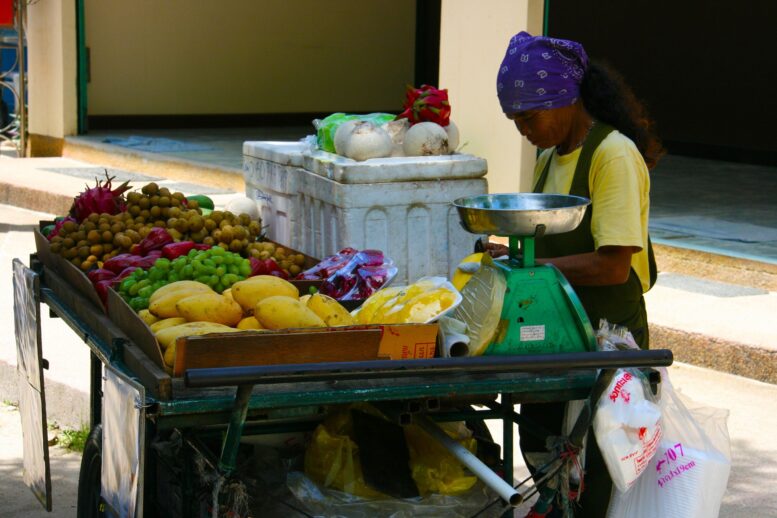I was watching CNN Philippines recently when a short mention of Philippine Innovation was highlighted. It showed a small business owner had developed a process to collect, restore, and possible reselling antique bicycles. It highlighted the fact that there are thousands of abandoned bicycles that could supply his shop. The owner also had a couple of younger employees on apprenticeship with him.
Many years ago, I also worked for a small single-owner bicycle shop as a mechanic although we were focused on servicing the racing bicycles instead of antiques. I do, currently, still own a restored first run Raleigh (aluminum framed) mountain bike. It must be 40+ years old now and still looking and riding great.
This prompted me to explore Small & Medium Enterprises (SMEs) in the Philippines, and see how they fit into the national economy. There is much information available online. What I found was very encouraging.
The Philippines is now at 54th place among 129 countries in the 2019 Global Innovation Index (GII). The Department of Trade and Industry says in year 2018 the Philippines placed 73rd place and this is just a start. In 2018, SMEs made up 99.6% of all registered businesses in the Philippines and employed over 70% of the working population according to Bob Wai Fong, Philippine Daily Inquirer, 18-May-2018.
However, they face a host of growth challenges —including lack of technical capacity, difficulty in accessing regional markets in ASEAN and, notably, a lack of access to finance —leaving them accounting for just 35% of GDP.
So what can be done to help this sector realize its full growth potential? SMEs often lack resources and are buffeted by unpredictable events. But their very smallness means they can also be nimble. And it’s this flexibility —both in redeploying resources and changing goals —which can drive innovation and success.
A number of ideas and examples were found.
- Recombining resources. The most skillful entrepreneurs recombine their resources to solve new problems and are able to imagine new possibilities for what they already have. For example, the founder of a remittance company, who could not afford to hire more workers, created a mobile app for customers to wire money without queuing at the shop, thereby eliminating the endless queues and chaos during peak periods.
- Exploiting contingencies. Contingencies—events that are unpredictable and somewhat random—are often part-and-parcel of what entrepreneurs have to deal with. Innovative entrepreneurs turn lemons into lemonade by converting challenges into new opportunities.
For example, an SME was developing an easy-to-use home machine with limited features for older diabetic patients to monitor the condition of their blood vessels. But when the team talked to the patients and nurses at the dialysis center, they realized that patients were not interested in monitoring their own blood vessels. On the other hand, nurses who were in charge of monitoring the dialysis process were keen on a monitoring device that could alert them of any abnormalities. The team quickly changed their target product and market from a simple home device for dialysis patients to a more professional device with a range of features for nurses.
- Willingness to cannibalize existing investments. If an idea or project proves to be out of reach, entrepreneurs can change their direction combining resources towards a different focus.
- Generating options. While researching ideas, entrepreneurs may develop ones that are not immediately useful, but might be worth considering in the future. For example, an equipment repair company explored the idea of developing software to monitor the conditions of customers’ equipment, to facilitate equipment maintenance. However, the cost of developing this software was prohibitive. Nevertheless, he continued to cultivate this option by sending his staff for training in the related domain. When he felt that the technology was sufficiently mature, his company became one of the first to market with such a software. So while the Philippine government moves to support future credit growth and stronger connections to regional and international supply chains, there is a more immediate opportunity to boost SME growth through the exploitation of their key defining feature: nimbleness.
- Providing innovative solutions to simple problems. Need a car but don’t want the hassle of driving through traffic yourself? Take a look at “Grab.” Navigating your way through the city in a rush? Use Waze. These apps help improve the way of life. It provides businesses a chance to think out of the box and introduce flexible ways to do everyday tasks, and gives consumers more options to do the same.
- Creating more buzz on social media. There are around 2 billion people on Social Media. On Facebook, Twitter, and Instagram, a business can utilize to share photos, videos, or simple statements that can reach millions, or billions of potential customers. Want to go island hopping from the North to the South via fast ferry? Search Facebook and other social media. You will find various ferry companies, travel schedules, travel advisories, with tons of pictures and suggestions about what places you shouldn’t miss.
Department of Trade and Industry Secretary Ramon Lopez recently said: “We expect further improvements in our ranking as we intensify our efforts to build our country’s innovation and entrepreneurship ecosystem, accelerate and globalize our startups, and better prepare our MSMEs and industries for the Fourth Industrial Revolution” .
There are many additional programs in the Government and Private sectors to help Entrepreneurs for Start-up and management of Small & Medium Business opportunities. What I’ve cited are only a few examples that I’ve found. Have a look around. The Philippine Economy is getting stronger every year due to the vision, innovation, and focus of the Filipino Entrepreneurs.
About the author: Timothy Muelder is a retired Facities Manager of the U.S.
